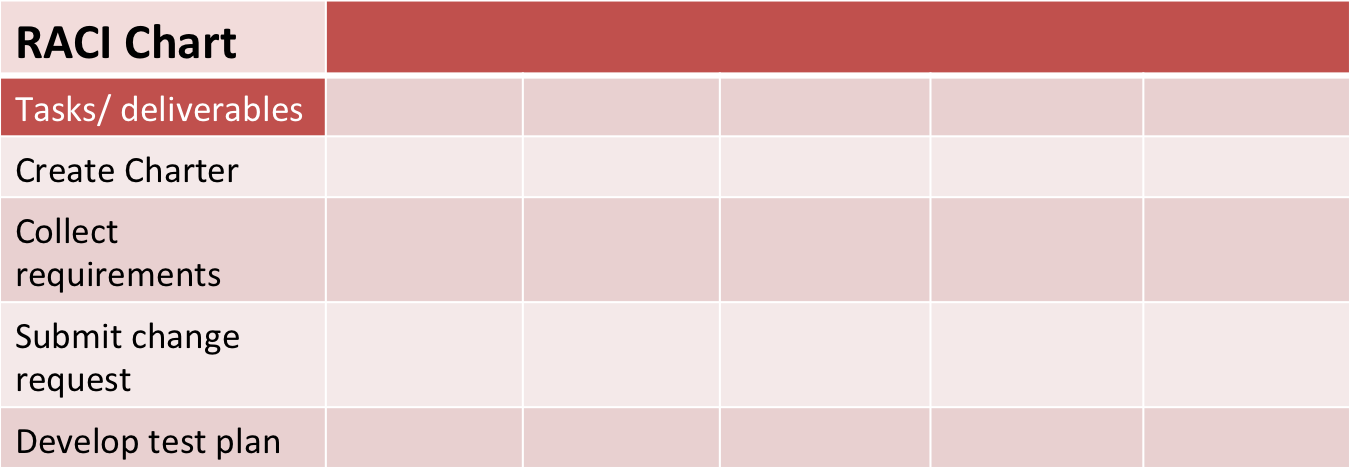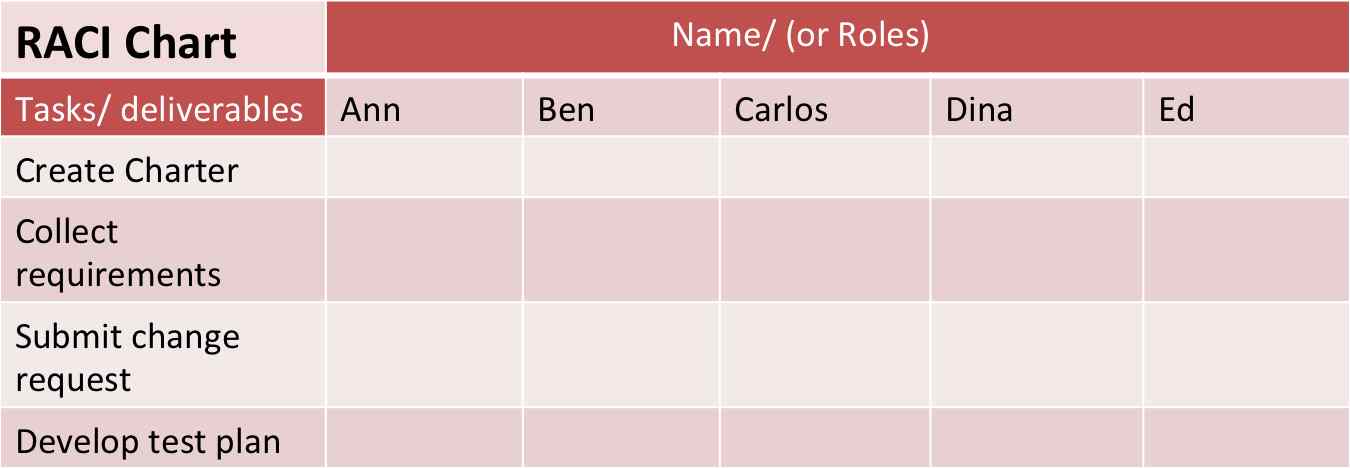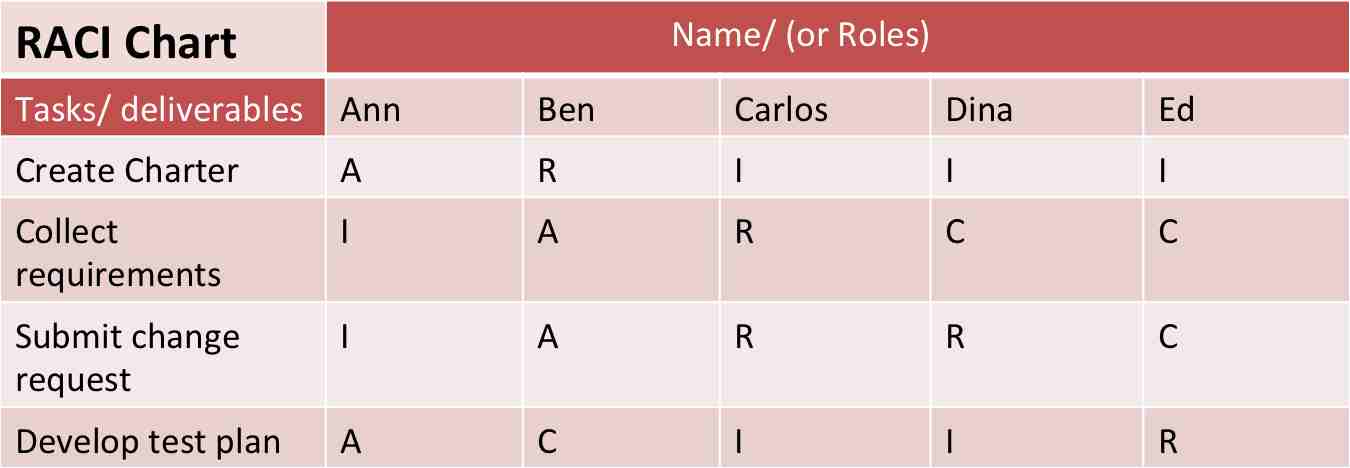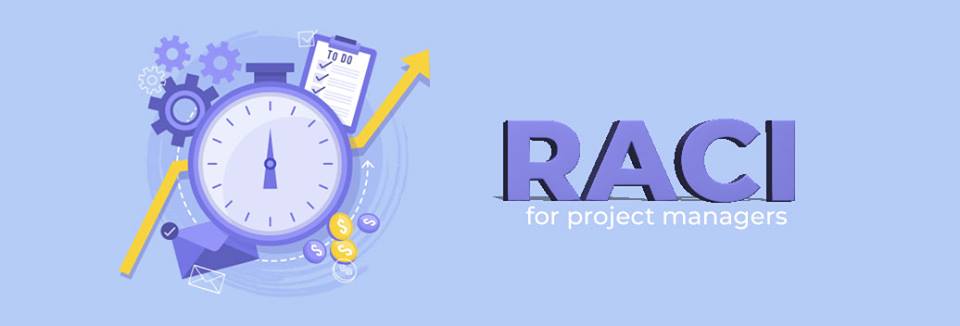RACI Matrix: How does it help Project Managers?
Ambiguous on the roles and responsibilities of your project participants and key stakeholders? No matter how clear your project plan is if you have not defined or missed any of their roles and responsibilities you are setting the stage for trouble in your project. As a project manager, I have worked on several projects ensuring that the project team to deliver, "What is expected." Believe me; it's not as simple as it looks. I had faced difficulties at the beginning where the team was unsure about the roles and expectations. It was difficult for me to get a commitment from them. This resulted in conflicts and problems which affected the project delivery.
So, it was clear that defining and documenting the roles and responsibilities of the team is a critical success factor in a project. Exploring various tools and models I have come across the RACI model or the RACI matrix, a simple and effective approach for delegation and assigning responsibilities. It has helped me to create a synergy and improve the project outcome.
So, what is a RACI Matrix?
RACI matrix is a delegation chart that helps to map every step of the project in detail to avoid confusion and misunderstanding.
The technique used to assign the responsibilities & tasks to team and stakeholders is known as RAM. RAM stands for “ Responsibility Assignment Matrix.” One of the widely used RAM tools is the RACI chart, also called a RACI table or RACI diagram. RACI is pronounced as “RACEY.”
RACI matrix is a really powerful tool in the project manager arsenal for project management. RACI reduces the role or task-related ambiguity among the team members. It clearly defines the ownership, level of responsibilities, whom to report, when to involve a project manager and when they should exercise their decision. If you are looking for effective ways to use RACI matrix for your projects, then I would suggest you read this article carefully till the end.
What does RACI stand for?
RACI is an acronym, which expands as;
- Responsible
- Accountable
- Consulted
- Informed
RACI integrates the tasks or deliverables from WBS (Work Breakdown Structure) & OBS roles (Organization Breakdown Structure). It really helps to set the expectations of the people involved in the project.

Image source: Created
Linkage between OBS & WBS in RAM (or RACI chart)
What are the RACI roles and responsibilities?

Now, let's understand each of the RACI elements in detail:
Responsible:
These are the project individuals, who act on the project tasks and produce deliverables. They take the responsibility to get the tasks done by carrying out the work. There can be more than one person responsible for a single task or deliverable depending on the task complexity.
Accountable:
Individuals, who take ultimate ownership of task delivery, are accountable. They ensure that responsible resources are delivering the task as planned. They are the “owner” of the task assigned. They are answerable for the successful completion & delivery of tasks as per the schedule. They should also ensure that all the related activities to the task are assigned in the matrix. It’s good to have one person accountable for the successful completion of the task so that we do not fall into the trap “everybody’s responsibility is no one’s.”

Consulted:
These are the roles of individuals, who need to be consulted for necessary inputs and approvals before the work is done or signed off. They don’t carry out the project tasks directly but give consultation and assistance necessary to execute them. They are usually a group of subject matter experts who are in constant touch for the smooth functioning of the project.
Informed:
This role doesn’t engage in project tasks or its completion. They always need to be kept in the loop in order to make them aware of project status. They are either influencer of the project tasks or the impacted parties by the project deliverables. Keeping them informed regularly as planned, can win their support in project execution & change management.
Advantages or benefits of the RACI matrix:
There are numerous advantages of RACI matrix in any project
1.Sets clear expectations:
RACI matrix helps the project managers to set clear expectations from the team and other project roles. Project members are aware of their responsibilities, decision-making authorities, and deliverables, that have to be produced by them. They all know,

- who is going to carry out the work;
- who will give the final approval;
- who is going to support the work for each task;
2. Brings synergy:
In the RACI matrix, the whole team is clear about their roles as well as other’s roles. This helps the team to realize the interdependencies they have to deliver a project. Thus encouraging them to collaborate and work together to deliver results.
3. Strengthens communication:
By assigning the right person with the right skill for a project task, project manager reduces the risk of failure. Identifying the limited, suitable and expert people for consultation reduces the time consumed in a lot of approvals. The consultants always work in tandem with the responsible team members helping them to complete their tasks in time. Also, RACI ensures communication about the task status to all the members in the informed role.
4. Avoid the chances of work overload:
One can argue if there are too many project tasks assigned to any individual in RACI mapping. Hence, RACI gives the opportunity to look into work overload for any particular resource. In such a case RACI matrix can be revisited to see, whether some of the tasks can be assigned to any other less engaged individual in the resource pool.
Can RACI be used in Agile projects?
RACI matrix can also be used in agile projects. But, before using the RACI matrix in an agile project, one has to keep in mind that not all agile projects require a RACI matrix.
RACI is used in large complex projects. It helps in projects where lots of tasks are to be done and too many resources are required to complete the project. In agile projects, we have predefined roles and responsibilities. The product owner takes the final product decisions and gives approvals. Hence, the product owner is accountable. The development team is responsible for task delivery. Also, in the Scrum framework, scrum master plays the role of a facilitator.
Hence, these roles have complete clarity on their responsibilities and expectations. However, someone can advocate for refinement in RACI chart as we may need a facilitator role in agile by scrum master. Hence, Christophe Le Coent has suggested adding a facilitator role in traditional RACI model from the scrum. He mentioned this scrum roles & responsibilities matrix as RACI+F matrix in his article, where F stands for Facilitator.
How to create a RACI Chart?
Following are the steps to create RACI Chart –
- Identify the WBS (Work breakdown structure) elements by fragmenting the project work into control accounts and work packages. From the work packages or lower levels, collect the tasks to be done and deliverables to produce. List down these tasks & deliverables in a sequence of their occurrence in project life across the first column of RACI matrix. Each task or deliverable would acquire a single row.
Image Source: PMBOK 6th Edition RACI – Step 1, list down tasks or deliverables from WBS

- Identify project key roles from the organization breakdown chart. Put these roles across the columns of the RACI matrix. Each column represents each key role, as shown in the figure. Sometimes these roles may be replaced by individual names to make it more specific.
Image Source: PMBOK 6th Edition RACI – Step 2, Identify key project roles or names from OBS

- Map these roles or names against each task or vice versa. Logically assign the RACI – responsibilities to each of the tasks or deliverables one by one. Keep in mind the RACI rules, while preparing RACI charts. These rules are mentioned later in this article.
Image Source: PMBOK 6th Edition RACI – Step 3, map each task to assign relevant RACI responsibilities (R/ A/ C/ I)

- Once done with mapping all the tasks across the roles, approach all the project roles and key stakeholders to take their commitment & consensus. After getting the full buy-in from all, freeze the RACI matrix. Visit it regularly to review its adherence & applicability.
Rules to create a RACI chart:
Points worth considering in order to effectively use RACI matrix in projects –
1. Single “A” for each task:
As long as possible, there should be only one person accountable for each of the task or deliverable. This ensures that all the tasks are given due importance. And there is only one individual, who takes the ownership of his or her assigned task delivery. This reduces the chances of passing the buck.
2. At least one “R” for each task, but not too many:
There should be at least one person assigned as responsible for each task. Having more than one person who is responsible is not a flaw. But the project manager has to ensure the justification on the number of responsibilities based on task complexity. More cooks in the kitchen may spoil the recipe.
3. Not too many “C” for each task:
Having many consulting roles for any task may delay the task because of a lot of approvals and consultations. The project manager has to assign “C” roles wisely to each task, not just to fill the RACI matrix. If any task has too many “C,” the project manager can look into, whether some “C” can be converted into “I”.
4. Don’t fill all the fields of RACI matrix with any role:
It’s not imperative to fill all the fields of RACI with at least one of the 4 responsibilities. RACI matrix should be prepared logically, not just to map each role against tasks unnecessarily. Some of the intersections of the roles & tasks in RACI can be left vacant.
5. Make the RACI chart dynamic & current:
Tasks should be carried out according to the mapped responsibilities for these tasks in RACI. It is always recommended to take the commitment from an individual on RACI on their roles & responsibilities. Keep RACI chart updated with necessary changes in responsibilities, if required during the project duration. In case of any change, refer to revised RACI & communicate the same to the team & stakeholders.
6. One task should be added for RACI matrix maintenance & assigned the responsibility to the project manager in RACI mapping.
Alternatives to RACI:
Some other alternatives to RACI are also in existence, but they are rarely used. RACI has gained popularity among the responsibility assignment tools.
Below are some alternates to the RACI model –
- CARS: Stands for Communicate, Approve, Responsible & Support. CARS model is action-oriented in comparison to the RACI matrix. It specifies the Support role explicitly.
- PACSI: Stands for Performed, Accountable, Control, Suggested & Informed. It works well with a lot of stakeholders engaged in reviewing the task delivery.
- DACI: Expands as Driver, Approver, Consulted and Informed. This model is very similar to RACI. Here, Driver replaces the Responsible & Approver replaces the Accountable.
Conclusion
Though the RACI matrix is a time-consuming activity and requires good negotiation & persuasion skills in order to freeze. However, it is worth spending time in order to set expectations and exactly define the responsibilities. It has been seen in the past, the major reason of team conflicts is ambiguity regarding responsibilities. This results in passing the bucks. But, with the RACI matrix, the project manager is able to assign responsibilities well in advance. Every project role understands what is expected of him and others.
Thus, RACI tool is really effective to set the direction for the team to commit to their assigned work.
Get ahead with the PMP certification
